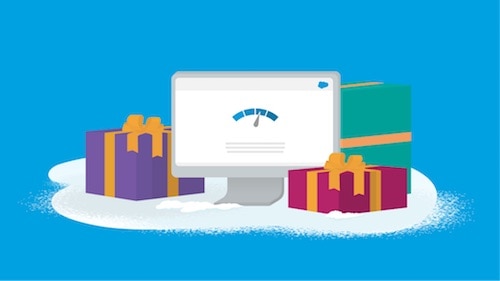Even the most well-known retailers suffer website storefront outages, but if they happen during the busiest shopping days of the year, the impact on sales is significant. Forty percent of shoppers will abandon a site if it takes more than three seconds to load, and even a one-second delay in page response correlates to a 7% reduction in conversion.
A best practice is to have a continuous plan for site performance year-round that accounts for the increased activity during the holidays. You should:
- Strive for 99.99% uptime
- Regularly monitor site speed
- Ensure caching is working properly
- Govern third-party integrations
We’ve outlined how to get your site ready to ensure a smooth performance through the holiday shopping season and beyond.
1. Plan for the best-case sales scenario
Prepare for peak holiday with a sound sales and traffic forecast with respect to last year’s holiday season with this year’s priorities and target metrics. Determine peak traffic thresholds and confirm if they exceed traffic estimates with the following activities:
- Perform load testing regularly to identify peak traffic thresholds
- Collect common performance metrics after every release and compare them to identify areas of improvement
- Implement tools for performance monitoring and troubleshooting
- Have a risk-mitigation plan in place with stakeholder alignment
- Purge old data to keep working data as slim as possible
Your team should include performance testing in every delivery and QA process to continuously refine your readiness model. Remember, every moment your site is down can cost you thousands of dollars in revenue.
2. Constantly check site speed
Bottlenecks happen when your storefront does not scale to meet shopper performance expectations. Desired runtimes range by storefront experience down to the millisecond. Use these runtimes as guidelines to ensure your storefront is properly scaling:
- Home page: 100ms to 250ms
- Product search/listing: 250ms to 500ms
- Product detail: 250ms to 500ms
- Cart: 500ms to 1,000ms
- Checkout: 1,000ms to 1,500ms
- Place order: 1,500ms to 2,000ms
- All other experiences: 500ms
If your storefront does not fall within these recommended guidelines, it may not properly scale under heavy traffic, particularly during peak holiday shopping days. If you detect bottlenecks, test the experience for friction points and address each issue individually. Once you’ve done that, retest to ensure the performance is fixed.
3. Optimize your caching
Retailers should cache 90% of editorial content, including the home page, and 50% to 70% of product-specific content. However, unused content prevents more useful content from filling the storefront cache.
Improve caching by identifying the most-visited storefront experiences. Determine the percentage of cached requests and see if you can raise it without affecting business objectives (such as bettering caching without degrading personalization). Finally, find the content that is being cached, but not reused, and prevent it from being cached in the future.
4. Stay on top of third-party integrations
Integrations, such as analytics tracking, security functions, services added to your core back-end system, and social integrations, are imperative to your business, but they put stress on the system. If integrations aren’t implemented or maintained properly, they can get in the way of a seamless shopping experience for site visitors. To safeguard against this:
- Consider failure scenarios and QA them during implementation
- Enable a time-out function for each integration
- Establish a governance policy that sets concurrency and rate-limiting thresholds
- Set automatic notifications to your team whenever third-party failures occur
- Include enablement controls on integrations to turn them off if there is an outage – and back on once it’s fixed
With your site on a continuous readiness plan, you’re prepared to tackle the unexpected during the busiest shopping days of the year. In addition to site performance, make sure you’ve considered all of the ways to have a successful holiday season with our 2019 Holiday Readiness Guide and visit the Holiday Readiness Headquarters for month-by-month tips and strategies. You can also text FLASH to 38767 to receive Salesforce Holiday Flash Reporting SMS updates.




























